On November 14, 2023, 74-year-old Hayrulhan Ahmat was busy peeling mulberry tree bark at her home in Buda Village, Puqiakeqi Town, Moyu County, northwest China’s Xinjiang Uygur Autonomous Region. Hayrulhan Ahmat has been making mulberry paper for more than 50 years and has mastered its complex making skills. On average, she can peel more than 10 kilograms of bark per day.
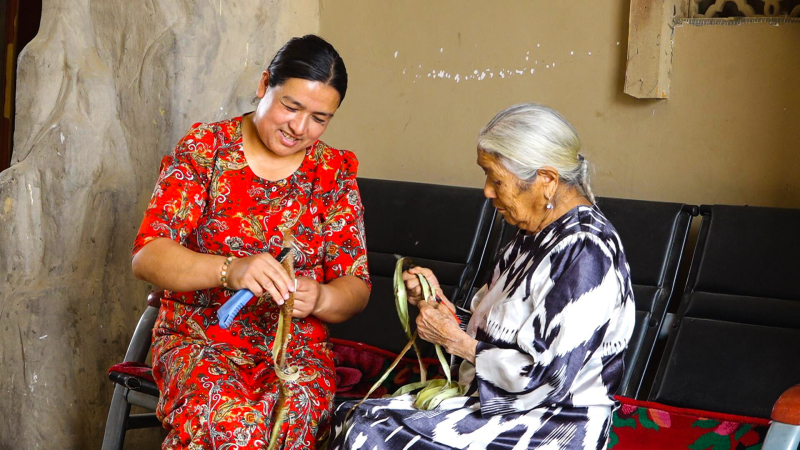
"It was my husband who taught me the craft of making mulberry paper. I learned how to peel mulberry tree bark first. When I saw my husband hammering the mulberry bark, I imitated him and hammered a few times, and he praised me at that time, 'That's very good! You can practice a few more times.'" Hayrulhan Ahmat said this while peeling the bark.
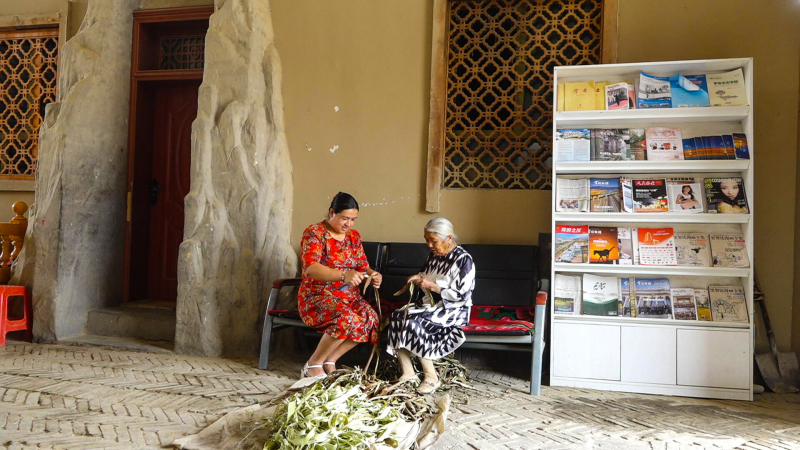
Hayrulhan Ahmat is the lover of Tohtibak Turdi, the 10th generation inheritor of mulberry paper making skills. 50 years ago, when they first married, Tohtibak Turdi and his families were engaged in making mulberry paper. Rows of mulberry paper could be seen drying on the doorways of every house on this street.
Traditional mulberry paper making involves processes such as soaking, peeling, boiling, pounding, fermentation, molding, and drying. The paper made in this way has evenly interlaced fibers, distinctive ink layer performance and soft texture. And it can also be preserved easily with its characteristics of high tensility and insect-resistance. Mulberry paper is mainly used for framing high-level paintings and calligraphy, umbrella making, fan making, and so on.
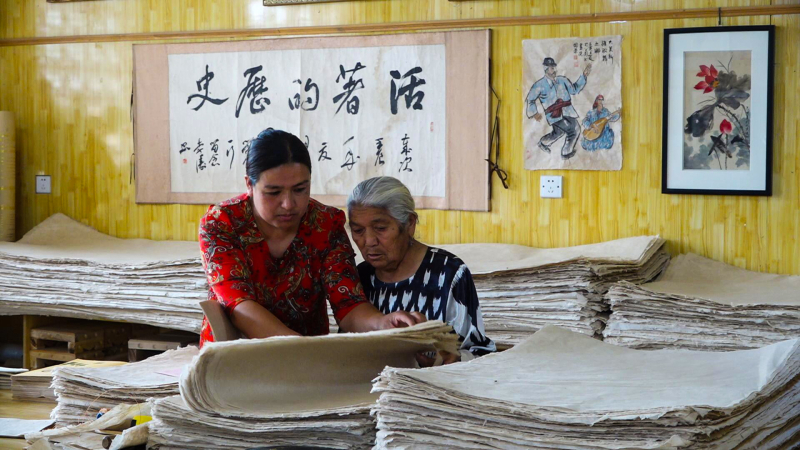
"In the past, I rarely traveled far away from home, and my furthest trip was to Hotan City. However, thanks to the continuous development of mulberry paper making, my husband and I have participated in two or three exhibitions; I also went to Urumqi five times with my son; and I was invited to Turpan to show this craft, explaining processes, such as peeling mulberry bark, hammering and pouring. In 2006, Xinjiang mulberry paper making techniques were included in the first batch of State-level intangible cultural heritage items in China, and my husband was selected as the 10th generation inheritor of Hotan mulberry paper making skills." Hayrulhan Ahmat said proudly.
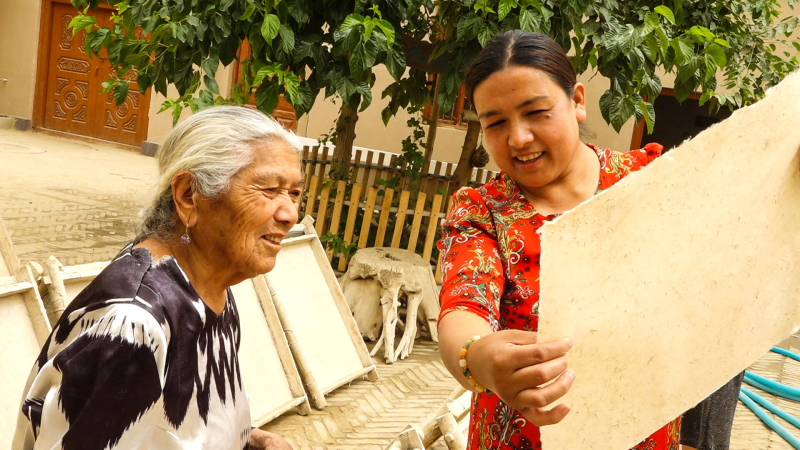
In the past few years, the old courtyard of Hayrulhan Ahmat has been repaired and expanded. And it has become a multifunctional tourist attraction, integrating functions involving display, production, trading, visiting and accommodation, with many tourists at home and abroad coming over to visit every year. Craftsmen are willing to show this craft to everyone who comes to visit.
"In 2014, my husband passed away. When he was alive, he was worried most about the inheritance of this craft, and kept telling me and the children that we must pass it on." Hayrulhan Ahmat peeled the mulberry bark and said, her eyes were wet with tears.
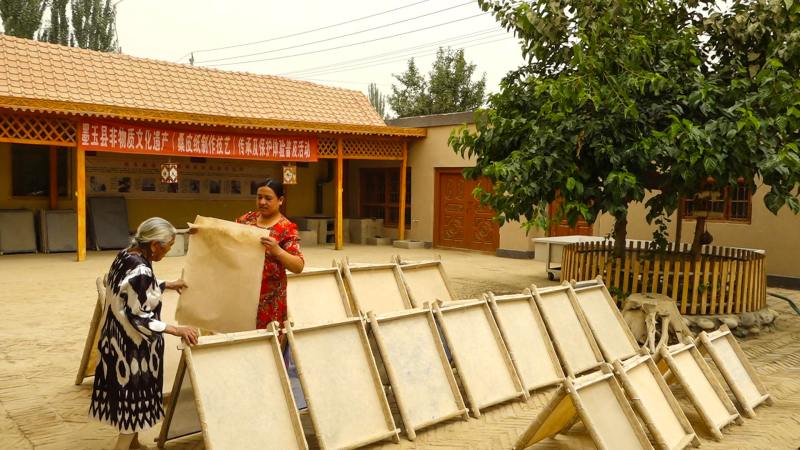
Mulberry-bark paper making is a craft with a history spanning over 1,300 years and is known as the "living fossil" of the human paper industry. In order to better protect and inherit the production technology of mulberry paper, Moyu County has built a "mulberry paper street" based on the inheritance of mulberry paper making skills. There are also complementary mulberry facilities in the area, such as paper museums, mulberry paper drawing rooms, and mulberry paper exhibition halls. At present, a group of more than 30 households and more than 50 people are inheritors of mulberry paper making skills in Moyu County. Moyu mulberry paper has also been exhibited many times in Xinjiang and other provinces in the fields of art, culture and history and has been loved by many artists.
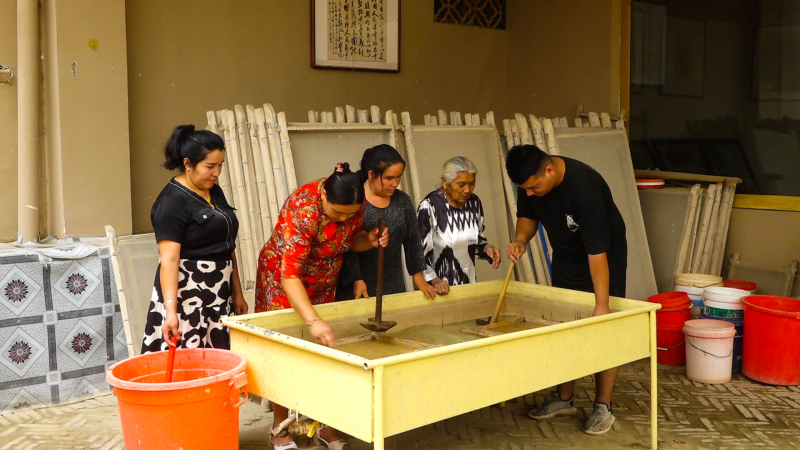
Time has left marks on the hands of Hayrulhan Ahmat for more than 50 years, and her eyes sparkled with earnestness and attentiveness. In her world, mulberry paper is not only her profession, but also a part of her life. She writes her own story as well as her love and persistence towards traditional handicrafts on mulberry paper.
Now, Hayrulhan Ahmat is 74 years old, she still works hard to improve her skills. And her children have also embarked on the career of making mulberry paper under her guidance. The love and persistence of Hayrulhan Ahmat and the exploration and innovation of a new generation of craftsmen for mulberry paper are intertwined on this street.
(The Media Convergence Center of Moyu County, Reporter Nabijan Azez)









